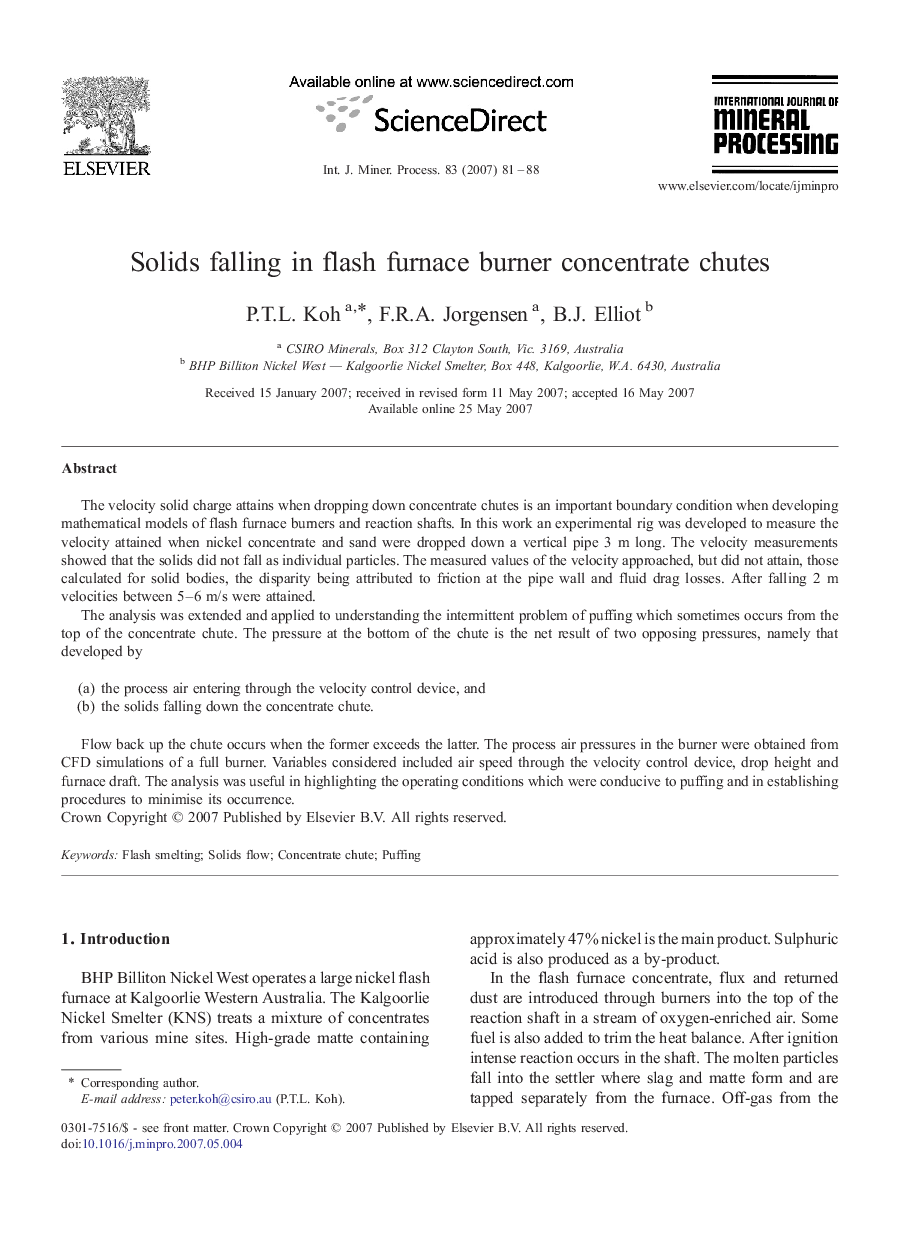| Article ID | Journal | Published Year | Pages | File Type |
|---|---|---|---|---|
| 214492 | International Journal of Mineral Processing | 2007 | 8 Pages |
The velocity solid charge attains when dropping down concentrate chutes is an important boundary condition when developing mathematical models of flash furnace burners and reaction shafts. In this work an experimental rig was developed to measure the velocity attained when nickel concentrate and sand were dropped down a vertical pipe 3 m long. The velocity measurements showed that the solids did not fall as individual particles. The measured values of the velocity approached, but did not attain, those calculated for solid bodies, the disparity being attributed to friction at the pipe wall and fluid drag losses. After falling 2 m velocities between 5–6 m/s were attained.The analysis was extended and applied to understanding the intermittent problem of puffing which sometimes occurs from the top of the concentrate chute. The pressure at the bottom of the chute is the net result of two opposing pressures, namely that developed by(a)the process air entering through the velocity control device, and(b)the solids falling down the concentrate chute.Flow back up the chute occurs when the former exceeds the latter. The process air pressures in the burner were obtained from CFD simulations of a full burner. Variables considered included air speed through the velocity control device, drop height and furnace draft. The analysis was useful in highlighting the operating conditions which were conducive to puffing and in establishing procedures to minimise its occurrence.
